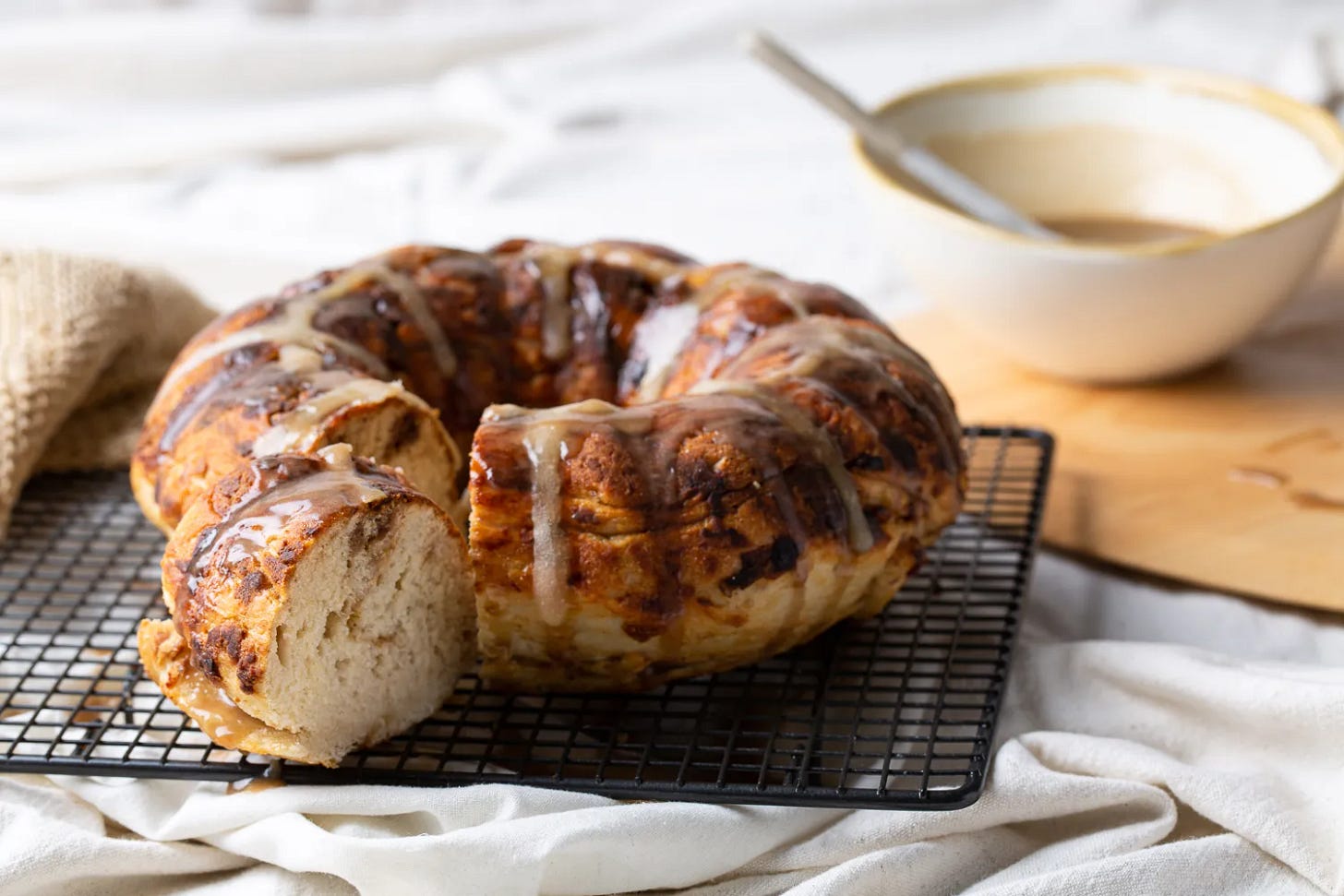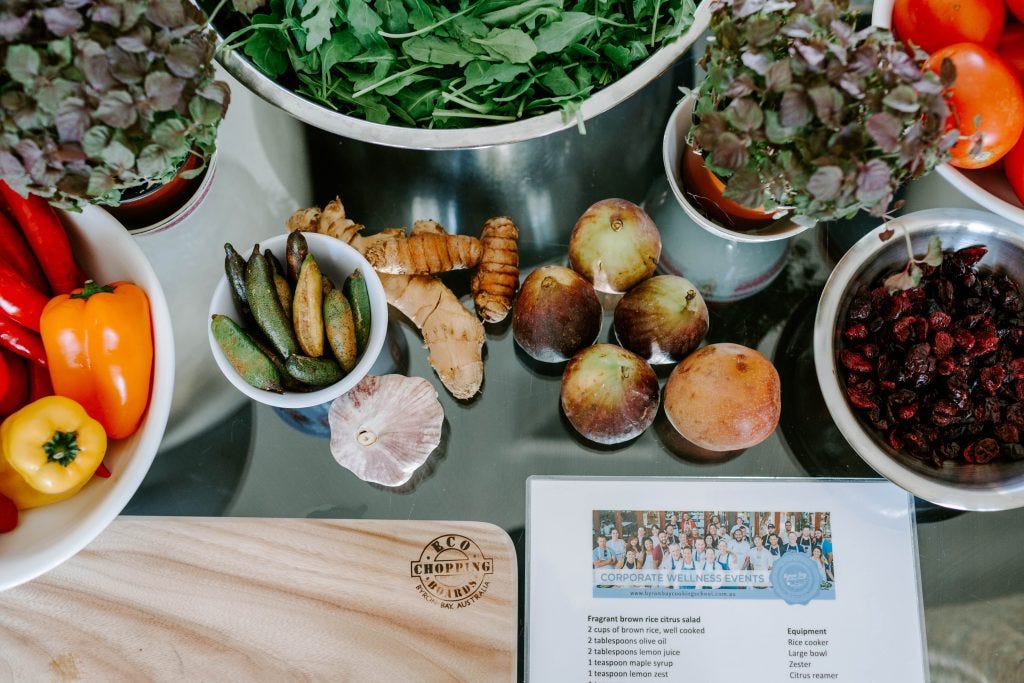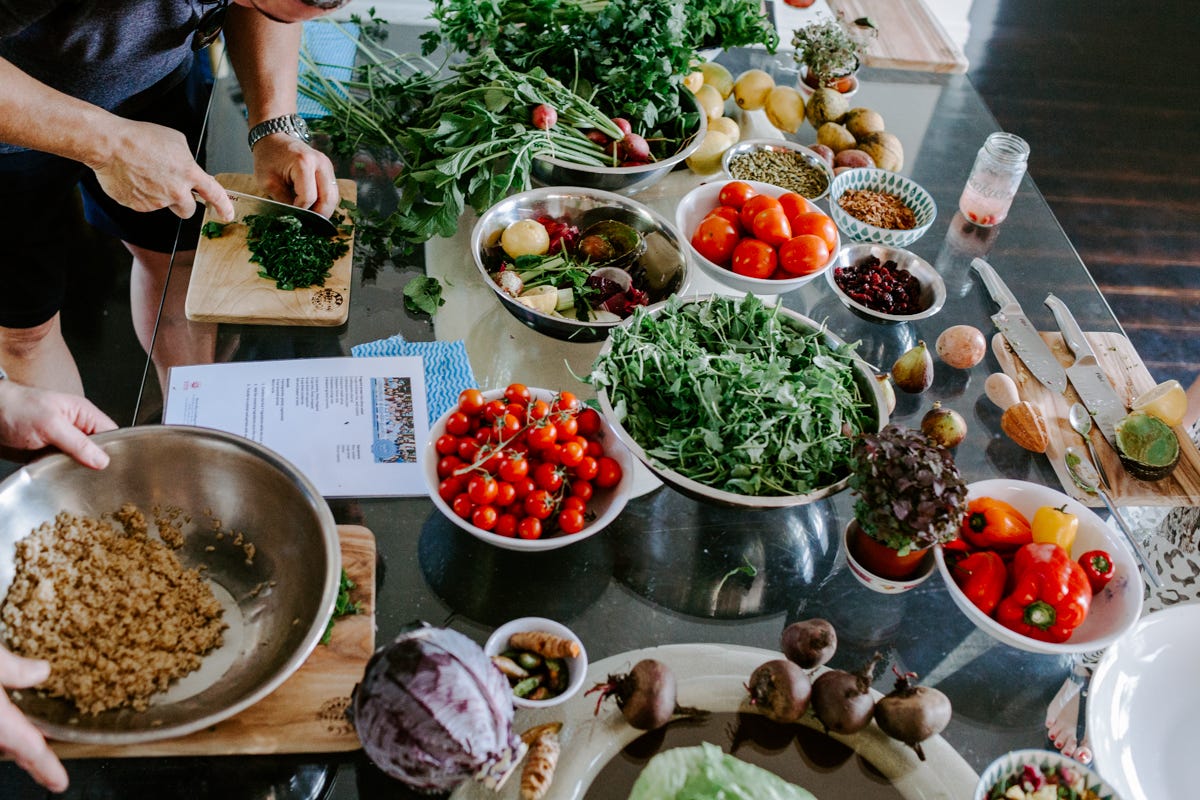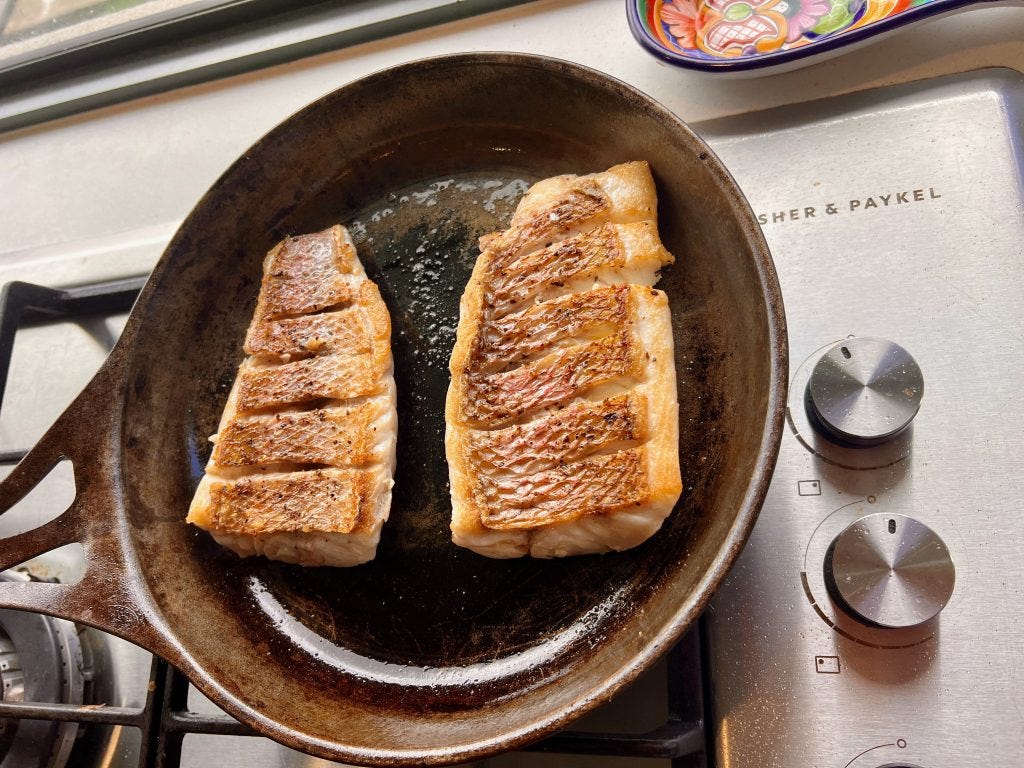If I had a dollar for every poorly constructed recipe I’ve encountered, I’d probably be watching a sunset on a remote island, far from the kitchen chaos, instead of sitting here writing this! While there are countless ways to write a recipe and many formats to choose from, I teach recipe writing with a focus on flow.
The Recipe as a Conversation
A recipe is so much more than a set of instructions—it's an invitation into your kitchen. When you write a recipe, you’re not just listing ingredients and steps, you’re creating a dialogue. A well-written recipe connects with the reader, guiding them through the process and sharing your unique perspective on the dish. It should feel like a conversation: friendly, approachable, and easy to follow. The goal is to ensure anyone, from beginner cooks to seasoned chefs, feels confident and inspired to create the dish themselves.
The Essential Structure of a Recipe
While there are many ways to structure a recipe, the key is to organize it in a way that flows logically and is easy to follow. A recipe should have a clear, concise structure that ensures each part contributes to the overall cooking experience.
Ingredients: Clarity and Order
The ingredients list should be precise, with exact measurements, and organized in the order they’re used in the recipe. Whether you’re using teaspoons, grams, or cups, being specific helps the cook gather everything they need without second-guessing. It’s also helpful to group ingredients used together in the same step, but be sure they appear in the correct order for that particular step. I prefer not to bullet or number the ingredient list. As a cook, I find it can be confusing and clunky. But hey, that's just my preference!
If you’re providing both metric and imperial measurements, make sure there’s enough space in your layout—whether for a cookbook or a website. For instance, when Nelly le Comte and I work on cookbooks for our clients, we often deal with narrow ingredient sidebars, so we have to be very economical how we present the measurements, using minimal space for the numbers and units. It’s all about thoughtful design to showcase the food and enhance Nelly's stunning photography.

Method: Step-by-Step Instructions
The method is the heart of your recipe. It should be broken down into easy-to-follow, numbered steps, with each step providing enough detail to guide the cook successfully. Use simple language and avoid jargon unless necessary. If you're a confident writer, then by all means weave the method into more of a story, however I find the a numbered or bulleted methodology the most helpful.
Think about the pacing of the recipe—step too fast, and the cook may miss an important detail; too slow, and the excitement of cooking can fade. Each step should move logically to the next, ensuring the cook can follow along without having to flip back and forth.
Timing and Temperature: Getting it Just Right
Cooking times and temperatures can make or break a dish. Providing accurate timings for each step, from prep to cooking, ensures your readers can manage their time and execute the recipe effectively. Be specific about oven temperatures (e.g., 180°C. not “medium heat”) and suggest any flexibility based on different equipment (such as convection ovens). Offer guidelines on what to look for visually (e.g., “golden and crispy”) to help cooks feel confident they’re on the right track. For pan frying, I will often write something like this: Set a heavy-based frypan over a medium-high heat, add butter or olive oil....
If you're catering to a global audience, it's best to include both Celsius and Fahrenheit for temperature measurements. Don't forget gas marks if your audience is in a region still supports gas. In Victoria, Australia, most household gas use is being discontinued due to its environmental and health impacts. However, just ask a chef, I'm sure they'll tell you they love cooking with gas!
Tools and Equipment: What You’ll Need
It’s helpful to include a list of essential tools, such as a sharp knife, roasting pan, or blender, so the cook knows exactly what to prepare. If specific tools are necessary for the recipe, mention them early on, especially if they’re uncommon. This way, the reader can plan ahead and ensure they have everything ready before starting.
If you're brand ambassador or being paid to promote, then include it in your story, even if you're no longer on the payroll. For example, I bought Le Creuset very early in my career, I inherited my dad's stunning copper pots - and I love the Solidteknics frypans that I was provided a while back.
These pans and utensils are seriously impressive—premium Australian-made cookware that I absolutely swear by for home cooking. While they're a bit too hefty for my carry-on, they are perfect for the kitchen! They handle high heat beautifully, cook evenly, and are a breeze to clean. If you love them as much as I do, be sure to let the makers know!
The Art of Writing a Recipe: Making it Relatable and Clear
Great recipes don’t just give instructions—they make the cooking process enjoyable. When writing a recipe, think about how you can engage your reader, making the process as enjoyable as the dish itself. After all, cooking should connect you, rather than being a chore.
Tone and Language: Engaging Your Audience
The tone of your recipe should reflect your personality as a cook. Whether it’s playful, professional, or comforting, the language should feel inviting. A friendly, conversational tone often makes the recipe feel more accessible, while a more authoritative tone might suit technical or professional recipes.
I usually write my social posts and articles with a characteristically cheeky tone, however your voice should always adapt to your audience. What resonates with experienced chefs might not suit beginners, so it’s important to tailor your tone. With more formal blogs like this post—where I want to be more instructional and clear—I tend to dial down the cheek and focus on structure, accuracy and guidance.
Visuals and Measurements: Guiding the Cook
The Importance of Testing: Ensuring Reliability
Nothing is more frustrating than following a recipe only for it to turn out wrong. That’s why testing is crucial. A good recipe writer tests their instructions to make sure the steps are clear and the dish turns out as promised. I'm still recovering from the whirlwind of abuse I copped for re-posting the CWA Anzac cookies that didn't work for the reader.
Oh my I hear you say! So, ask yourself if the recipe is foolproof, and could a beginner be able to replicate the dish without too much guesswork? Ensuring accuracy will build trust with your readers and help them feel confident using your recipes time and time again.

Ethics in Recipe Writing: Credit Where Credit is Due
Writing a recipe also comes with a responsibility to respect the work of others. As recipes often draw inspiration from various sources, it’s essential to acknowledge those influences to maintain integrity and foster a culture of respect in the culinary world.
Acknowledging Inspirations: From Chefs to Home Cooks
If a recipe is inspired by someone else’s work, credit is essential. Whether it's a famous chef, a home cook, or a tradition from another culture, acknowledging these influences shows respect and transparency. If you’ve adapted someone else’s recipe, share how you’ve made it your own while recognizing the original source.
With so many chefs and great cooks, it's hard to pick an example, so here goes. I teach this bulletproof renowned Australian chef Matt Moran’s fabulous fondant recipe time and time again, it's that good, and it gives my students such a buzz when they're ready to serve up.
Avoiding Plagiarism and Respecting Intellectual Property
Plagiarism in recipe writing is unfortunately common. It’s important to avoid copying another writer's recipe verbatim without permission or proper acknowledgment. Even small changes or adaptations should be clearly attributed. By being ethical and transparent in your writing, you’ll build trust with your audience and foster a more ethical culinary community.
Over the past 25 years, my recipes have been subject to varying degrees of plagiarism — from cheeky copycats of my tasty turmeric tonics to mysteriously familiar miso based plates popping up in cafés I’ve never set foot in. While imitation may be the sincerest form of flattery, it’s the outright hijacking of my brand name, Byron Bay Cooking School, that really turns up the heat — and not in a good way.
In recipe writing, there’s an industry rule of thumb—change at least 20% to steer clear of copyright claims. But in the case of the caramel slice controversy between Nagi Maehashi and Brooke Bellamy, the recipes were almost identical—stirring up more than just condensed milk and coconut! Curious? Read Dani Valent’s take on it here.
In the Will Write for Food newsletter, food writing expert Dianne Jacob highlights a troubling case where a food blogger accused an influencer of lifting her recipe without permission. It's a strong reminder of how important it is to respect the intellectual property behind recipes—especially in a digital world where content circulates rapidly and often without proper attribution (read the full post here).
Jacob references an excellent analysis by The Washington Post, which explains that copyright laws in Australia are similar to those in the U.S. and Britain. This means that, contrary to popular belief, recipes can be protected—not necessarily the ingredient list, but the way instructions are expressed, structured, and styled.
So, what does that mean for recipe developers?
Even if you're based in Australia, you can’t simply take a recipe, make minor edits, and claim it as your own. As Jacob and The Washington Post both highlight, ethical recipe writing means creating original content or seeking permission when necessary.
It is only when there is a highly original expression of instructions or a collection of recipes, such as in a book, that there may be a basis for a claim. Recipes should be a place for creativity, but it’s important to balance that creativity with respect for tradition and the essence of the dish.
Innovating While Staying True to Tradition
It’s tempting to tweak a recipe for the sake of originality, but sometimes innovation means improving a dish, not overhauling it. For example, adding a modern twist to a classic dish can be a wonderful way to express creativity, but you should still honor the essence of the original recipe. This balance keeps the dish’s integrity intact while allowing room for personal expression.
How to Adapt Recipes Without Losing Their Essence
Recipe adaption is your key to success and unique offering. When adapting recipes, especially those with cultural significance, it’s important to understand the roots of the dish. Making swaps, adjusting seasonings, or changing techniques can be a great way to innovate—but ensure that the core flavours and spirit of the dish remain intact. Educate yourself on the origins of the dish, its ingredients, and its cultural meaning before you make significant changes.
With my background in Japanese and Southeast Asian cooking, I’ve learned how to make smart, flavour-forward substitutions when certain ingredients aren’t on hand. For instance, if you don’t have dashi, a light vegetable broth with a dash of tamari and a sheet of kombu can work wonders. Out of finger limes or kaffir lime leaves? Try a blend of lime zest and a touch of lemongrass to mimic that citrusy lift. No galangal? Fresh ginger with a pinch of white pepper offers a similar warmth, though not quite the same perfume.
It’s all about knowing the function of each ingredient—whether it's umami, acidity, or aroma—and finding a balance that still honours the dish.

Sharing Your Food Story
A well-crafted recipe is more than just a set of instructions—it’s a way of sharing your food story. Each recipe tells a part of who you are as a cook, where you’ve been, and what inspires you. It allows others to bring a piece of your world into their own kitchens.
By writing with care, creativity, and integrity, you create connections through food. The process of cooking becomes more than just following steps; it becomes an experience that nurtures both body and soul.
So, write with confidence, share your knowledge, and enjoy the journey. Your recipes can become a bridge between generations, cultures - and kitchens around the world.





